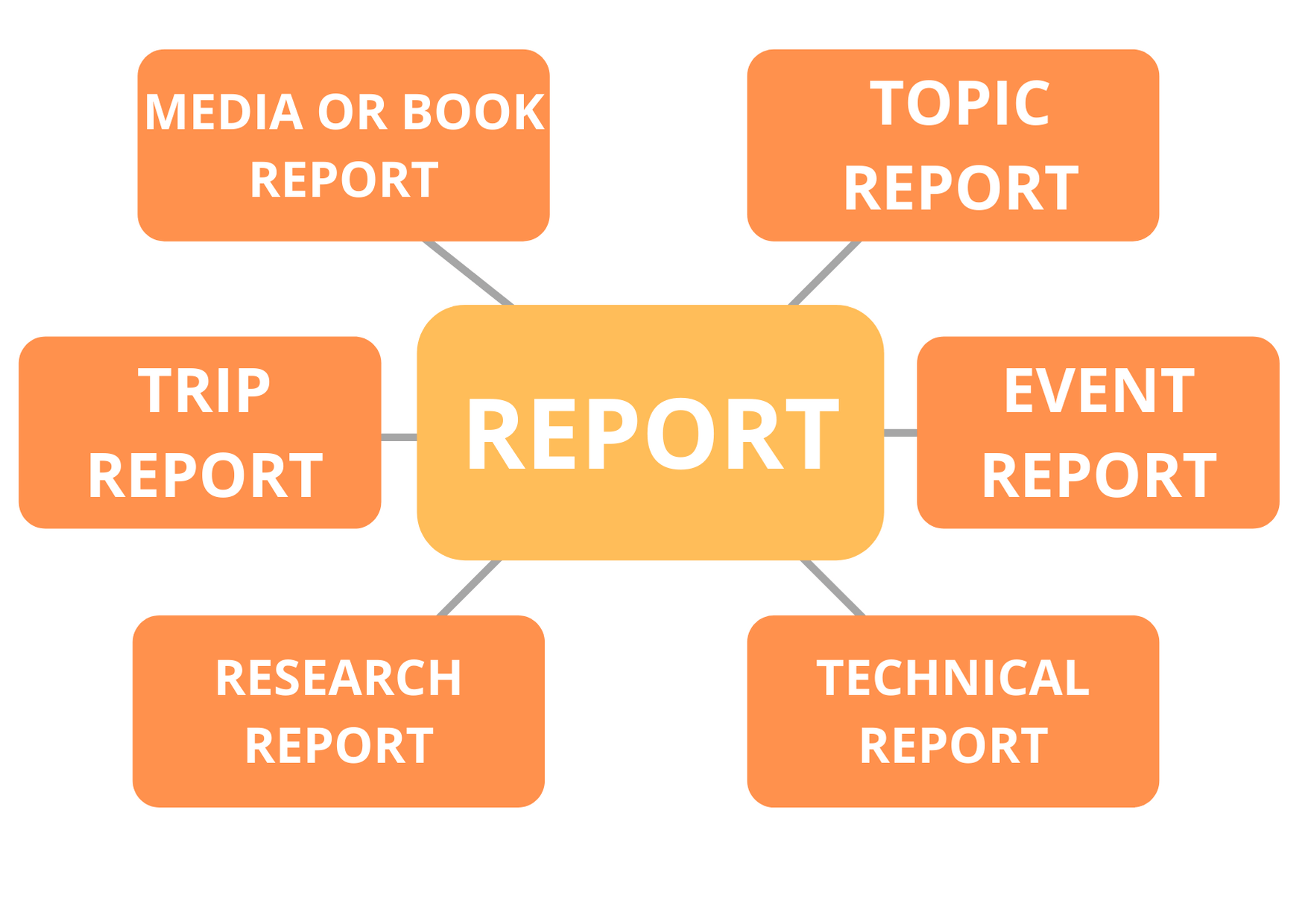How to Write a Report
Writing Guide
Whether you’re a liberal art major or you are in a more technical course of study, reports are key requirements for most classes. A significant portion of your grade for a particular class may even count on how well you are able to complete this task. This article will define what reports are, provide an overview of the different types of them that you may have to complete and provide a step-by-step guide to teach you how to write such a piece as well.
What Is It?
In academia, reports are defined as short, concise documents written to provide key information to a specific audience. It often sums up key topics, events, occurrences, or larger media forms, such as books, to help the audience gain a general understanding in a short period of time. Reports are sometimes confused with essays, which are often the same general length. However, essays typically attempt to express an opinion or line of reasoning; more often than not, an essay will have a point of view that is attempting to persuade the reader. Reports, on the other hand, are designed to be a recap of facts.
Types

There are several different types of academic reports. Each may have slightly different formats and preparation requirements, depending on the purpose and type of information that is being summarized. The most common types of report can be set around:
- Media or Book. A media report is a synopsis of either a book, a series of books, a film, or some other type of media. Such pieces normally include information about the subject, the characters, and the key events. This is one of the most common types that students are required to prepare.
- Topic. A topical report usually provides a concise summary of a particular topic, object, or individual. Such works might be focused on historical figures, plants or animals, political parties or types of governments, etc.
- Event. This one provides a synopsis of a particular event or activity, such as attendance at a political rally or a speech. They typically provide overviews of the location or setting, key actors involved, and a recap of what transpired.
- Trip. It provides a concise summary of a visit to a particular location, such as a museum visit or a trip to an archaeological site. This type often discusses observations from the visit, as well as any key insights gained.
- Research. Such pieces are used to sum up work, such as an experiment or scientific study. They will typically discuss the problem the student set out to study, the research methodology used to study it, and the results or conclusions drawn.
- Technical. Technical reports are prepared to summarize information about technologies or technical processes, such as how a particular piece of equipment functions or to concisely explain how a scientific process, such as fission, works. This type relies more heavily on terminology and may contain tables or illustrations to assist readers with understanding the information presented.
Preparation
Now that you have a better understanding of different types of academic reports and why they are prepared, let’s discuss how to write one of your very own.
Step 1. Determine the Requirements.
If you have a report assignment for a class, the first thing you need to do is understand what is expected of you. Before you start typing or put pen to paper, determine exactly what the requirements are. Ensuring you understand the assignment will get you focused and prevent you from inadvertently failing to complete an important part of the graded tasks. Some of the things you should attempt to determine once you receive a writing assignment include:
- Assignment Scope. What is the report supposed to be about?
- Topic Selection. Can you simply choose your own topic and begin writing your piece, or do you need to get the topic pre-approved?
- Format. Is there a prescribed format for the piece, or key information that must be included in the assignment?
- Key Dates. When is it due? If you must get your topic pre-approved, what is the date for that?
- Submission. Do you have to provide a hard copy of your work, or do you email it to your professor or teacher?
Step 2. Make a Plan.
Once you thoroughly understand your assignment, the next thing you should do is to make a plan for completing your work. Having a plan will help you use your time wisely and complete your report to standard and at the designated time. Using a calendar is the best way to map out your preparation plan. Mark the due date on your calendar, and then work your way back to the current date and time. Identify times when you are going to conduct research or travel, days for writing an initial draft, and then time for finalizing the draft. Include any other key preparation events that are required as well, such as topic pre-approval dates. Having a thorough plan will keep you on track throughout the entire preparation process.
Step 3. Gather Information.
One of the first steps of preparing your report is gathering the key information that you need to write it. Depending on the type, you can do this in many different ways. For example, if you have to write a book report, your information gathering process may consist of reading the book and conducting online research about the writer. On the other hand, you may not be able to gather information about an event, or trip until you actually conduct the activity. If that is the case, ensure you take good notes while the event, trip or research is transpiring. Try to record the events if possible or seek out other media recordings to aid in your observations later on. Ensure you take excellent, organized notes while gathering information as well. The better your notes are, the easier it will be to write the work later on.
Step 4. Prepare an Outline.
Once you have gathered all of the information you need, you should develop an outline. An outline is a basic framework for your paper.

Outlines can help you organize and map out all of the information you plan to present. In its most basic form, an outline consists of the following components:
- Title. Choose it wisely as it must represent the content.
- Introduction. The introduction provides a succinct overview of what the report is going to be about; it introduces the reader to the subject. Depending on the assignment requirements, an introduction is normally 1-3 paragraphs.
- Main Body. The main body is going to cover all of the key information on the subject. You will use paragraphs to organize the different ideas you present in the main body. This section may consist of 3-6 paragraphs, depending on the assignment requirements.
- Conclusion. In this part, you will sum up the key findings you drew while preparing your piece. The conclusion should reinforce information that you have covered in the main body and introduction; in most cases, your conclusion should be no longer than 1-2 paragraphs.
Certain types of reports may require additional outline sections. For example, in a research report, you may need to have a section to cover the type of equipment used to conduct your experiment. On the other hand, a book report may need a section to sum up the main characters. You should also consult with your advisor, lecturer, or professor to see if they have designated formats as well. Once you have your outline sketched out, try to write some rough notes in each section. If you can map out key points for each paragraph in a given section, do it. A thorough outline can be a big help when the time to begin writing the actual piece comes.
Step 5. Draft
Using the rough sketch of your outline and the notes you took while gathering information, begin preparing your work’s first draft. Flesh out the paragraphs you mapped out on your outline with full sentences. In addition to completing your thoughts, try to develop effective transitions that allow readers to logically and seamlessly move from one point to the next. Remember to use formal language and be as concise as possible. You should also ensure that the points you emphasize in your work’s summary were supported by the facts you covered in the main body, as well.
Once you have completed the first draft, review it one time for grammar and spelling, and make any necessary adjustments. Then, if possible, set it down for a period of time to give yourself a break. If you have the time, don’t plan on reviewing the paper again for 24-48 hours. Doing so will help ensure you have a fresh perspective and will aid you in evaluating what you have written and improving it in the final draft.
Step 6. Prepare the Final Draft
When you’re ready, open up your work again and read through it thoroughly. Check it for logic and flow and make any necessary adjustments so that you are satisfied with the language. When you are done revising, check it for grammar, spelling, and punctuation again. At that point, if it is feasible and permissible, try to get a trusted agent to review or write your report; the second set of eyes may be able to help you improve it or spot errors that you missed. Then, make any necessary adjustments, finalize, and submit it.
Parting Thoughts.
Whether you’re a high school student or pursuing an advanced degree, reports are a common requirement in nearly every academic program. So, if you have a report due soon, use the information provided here to ensure you to standard and get the grade you deserve!

